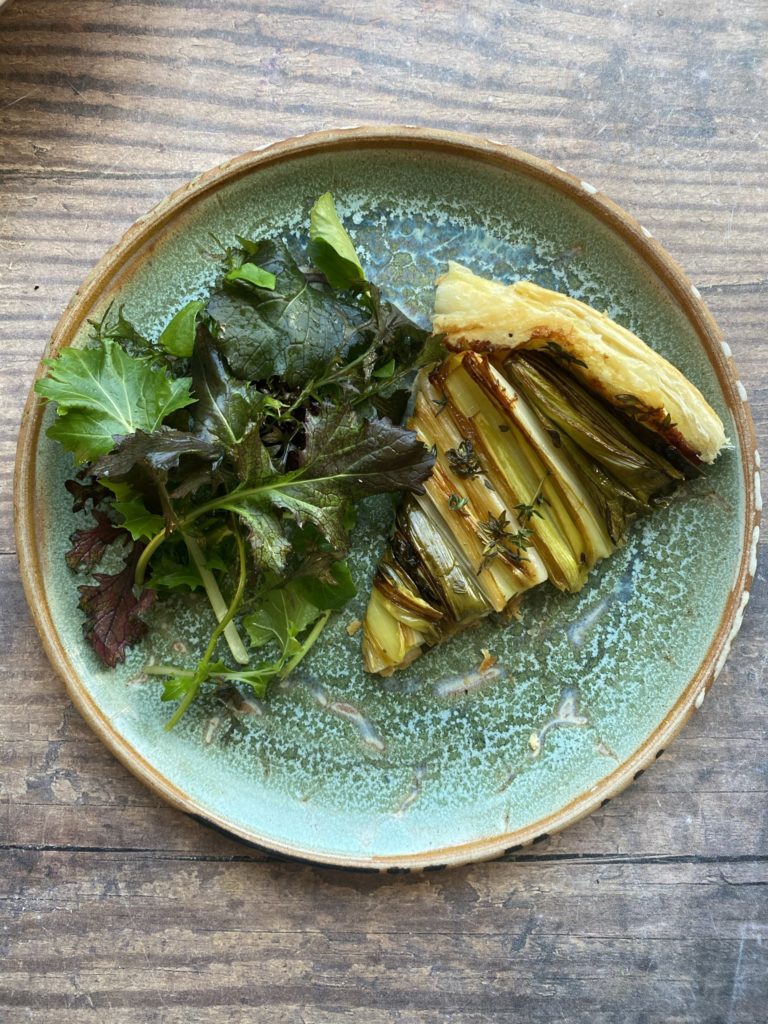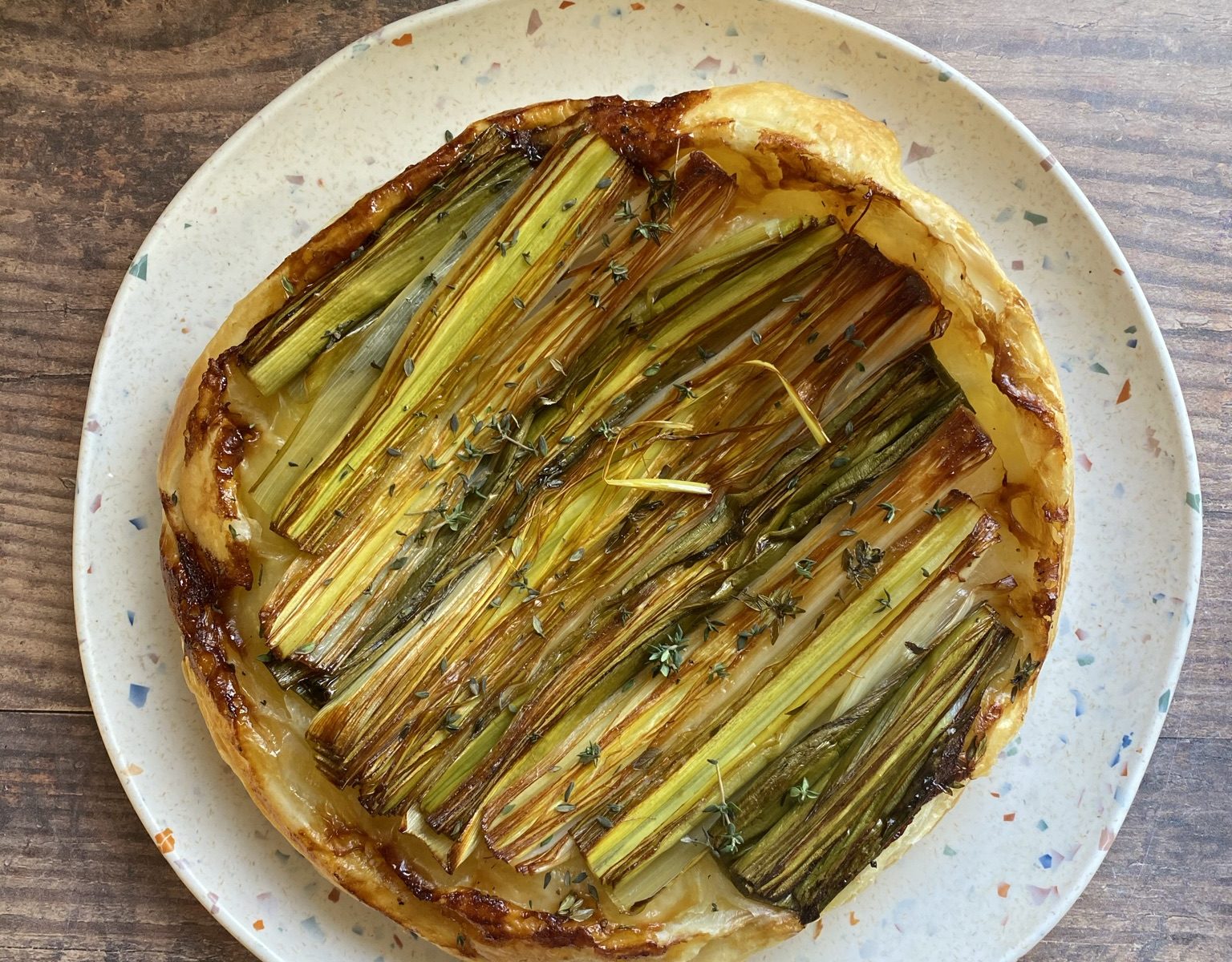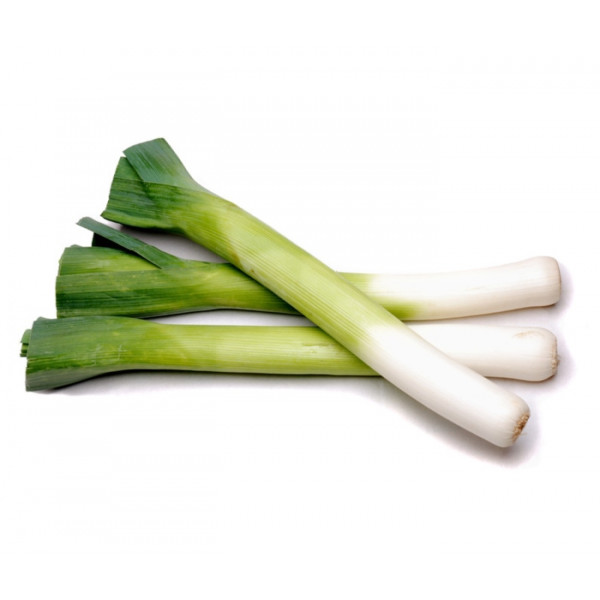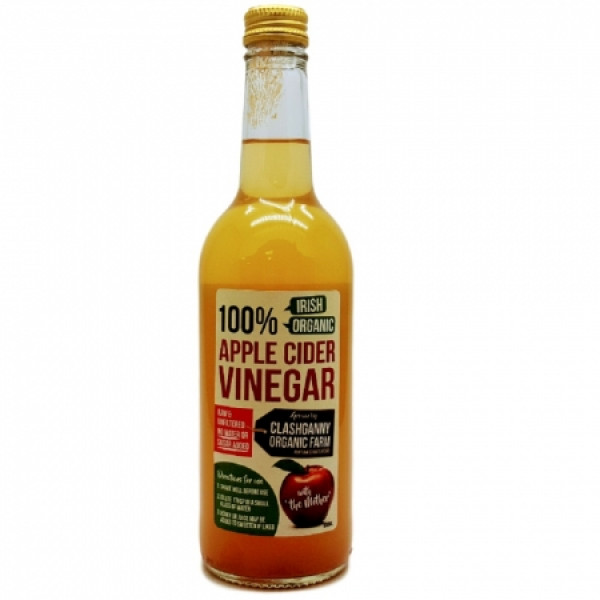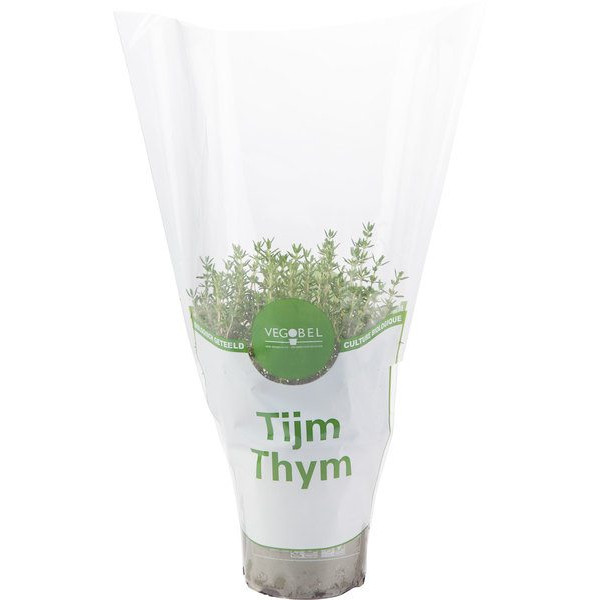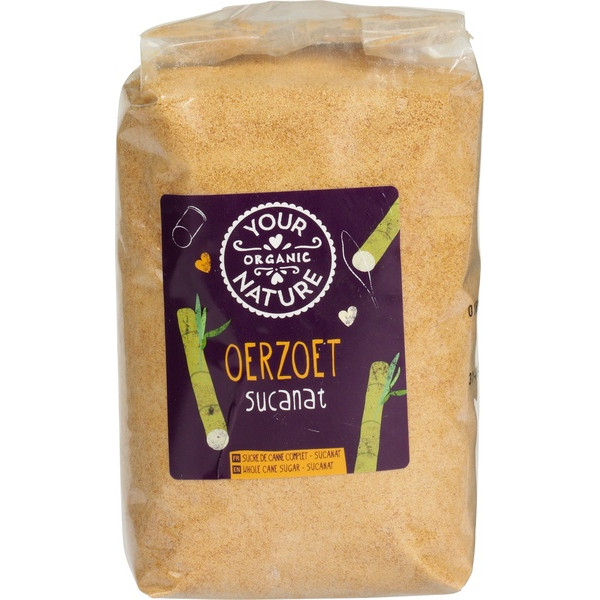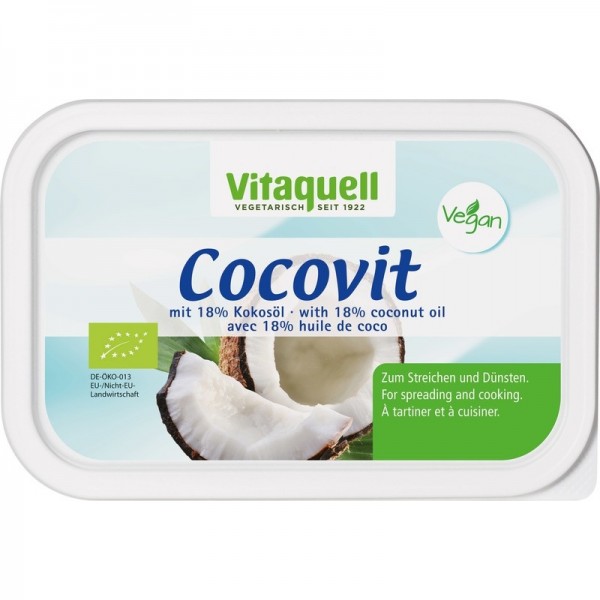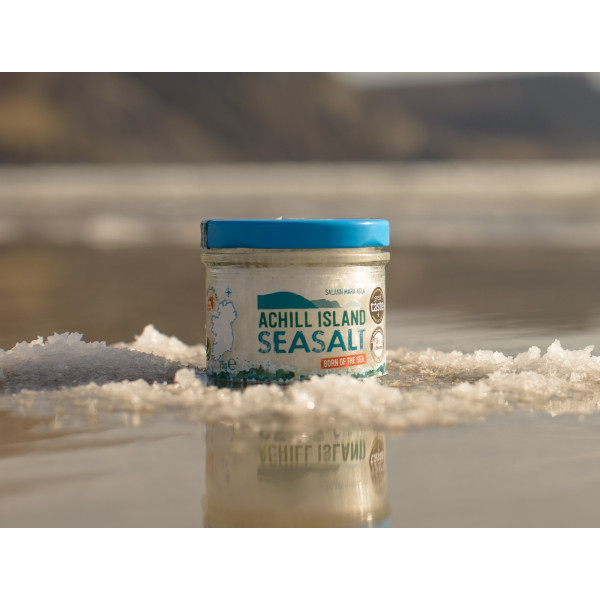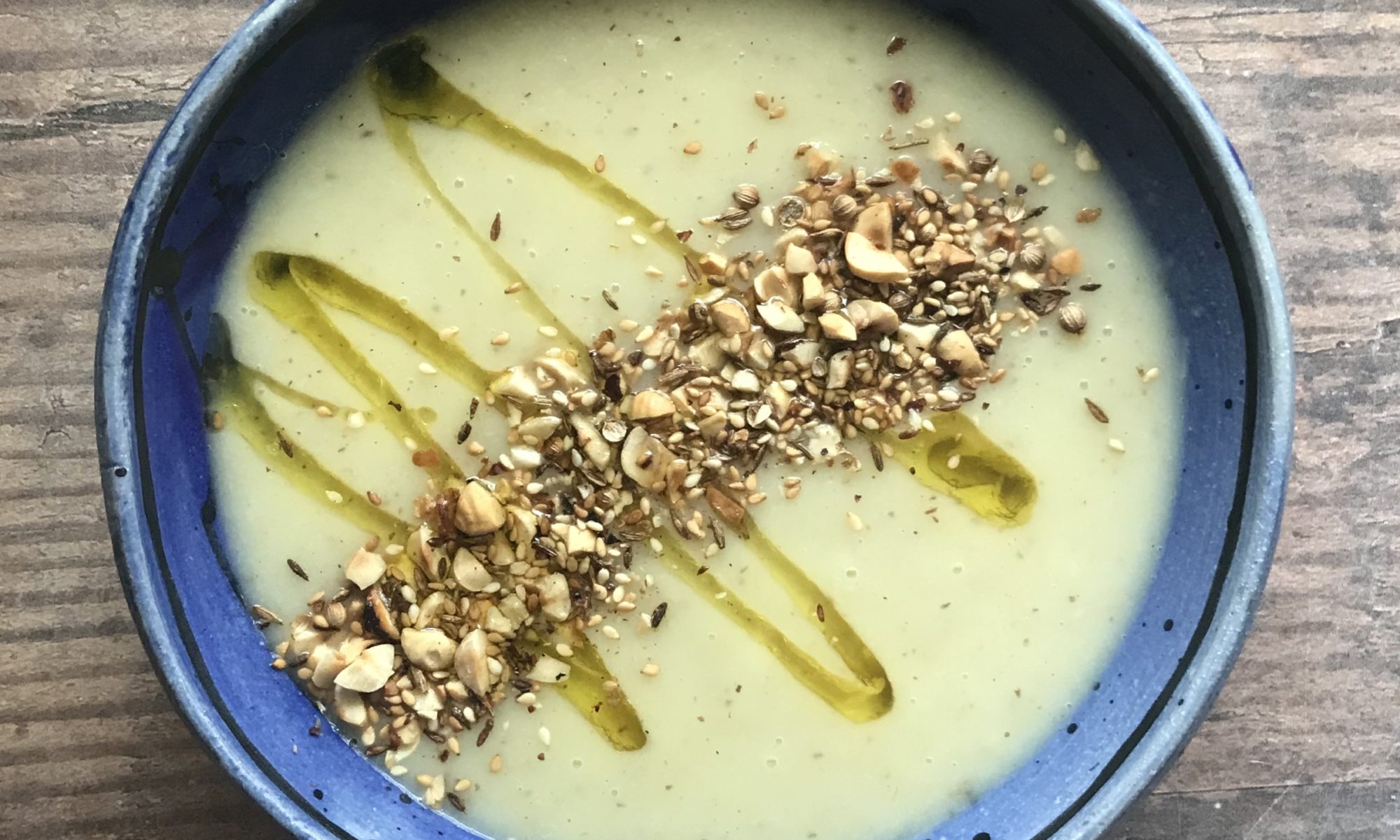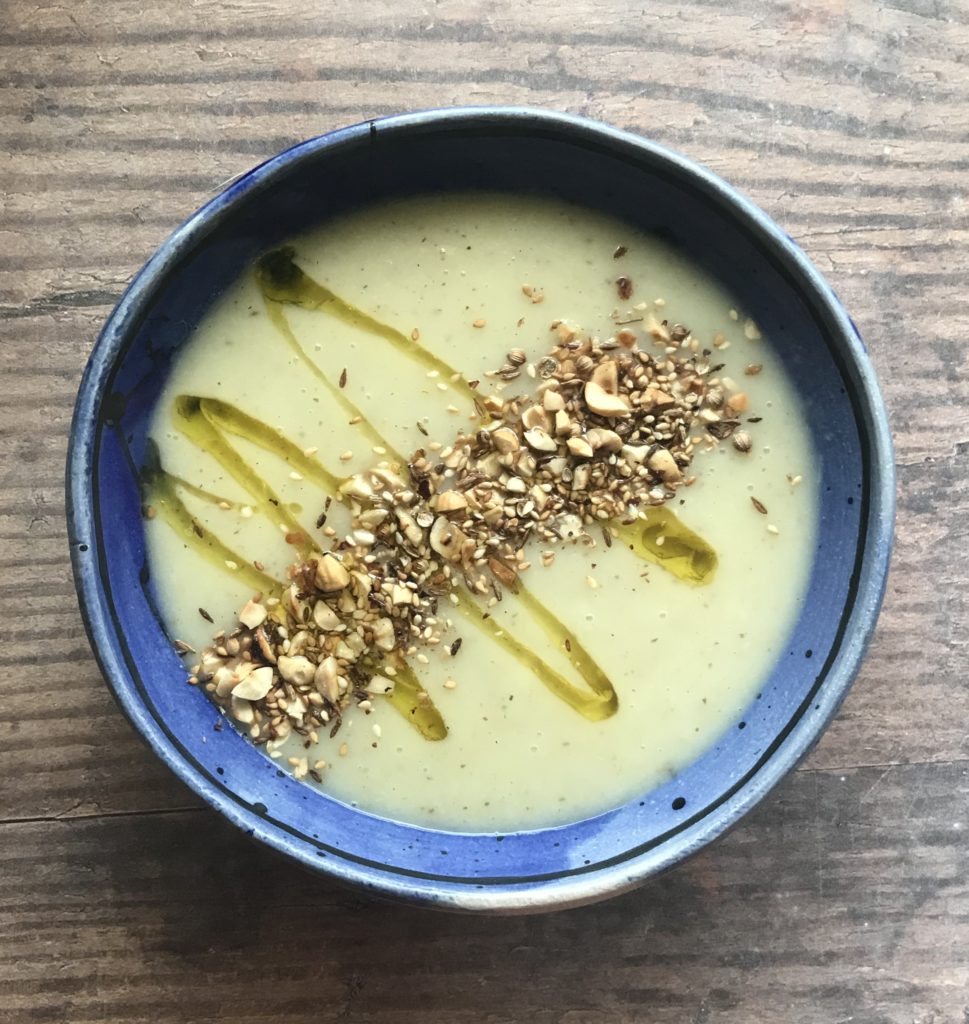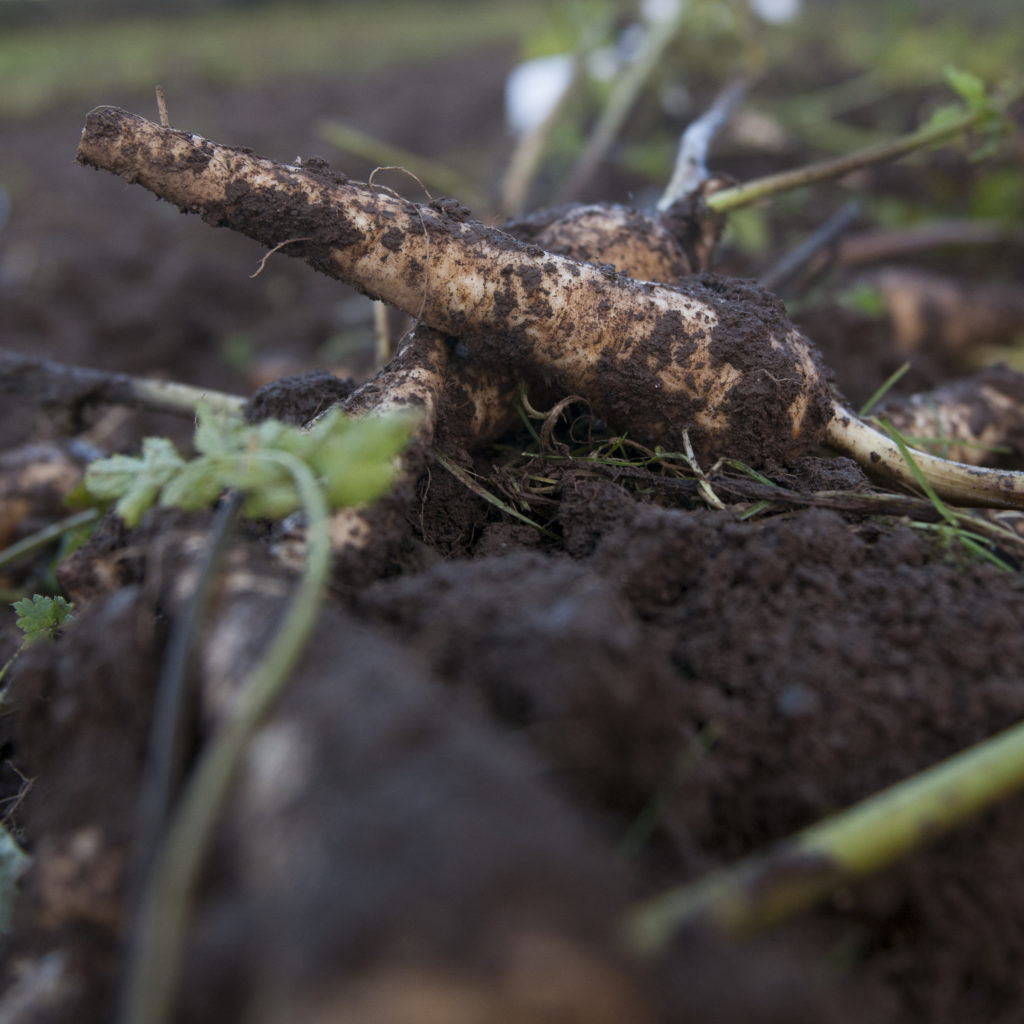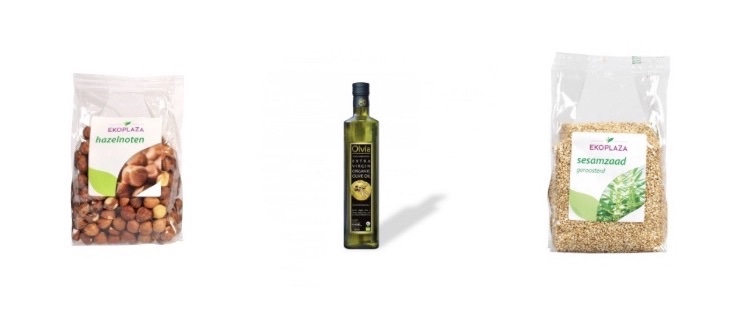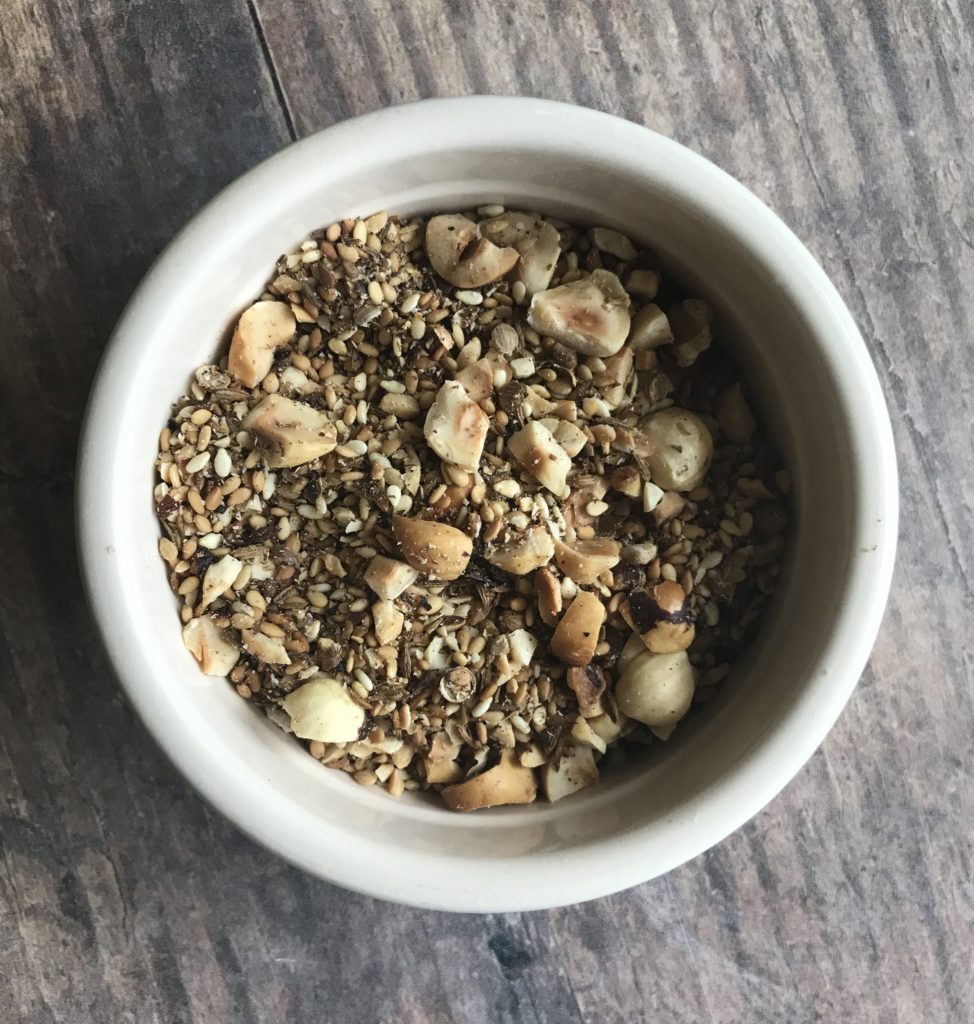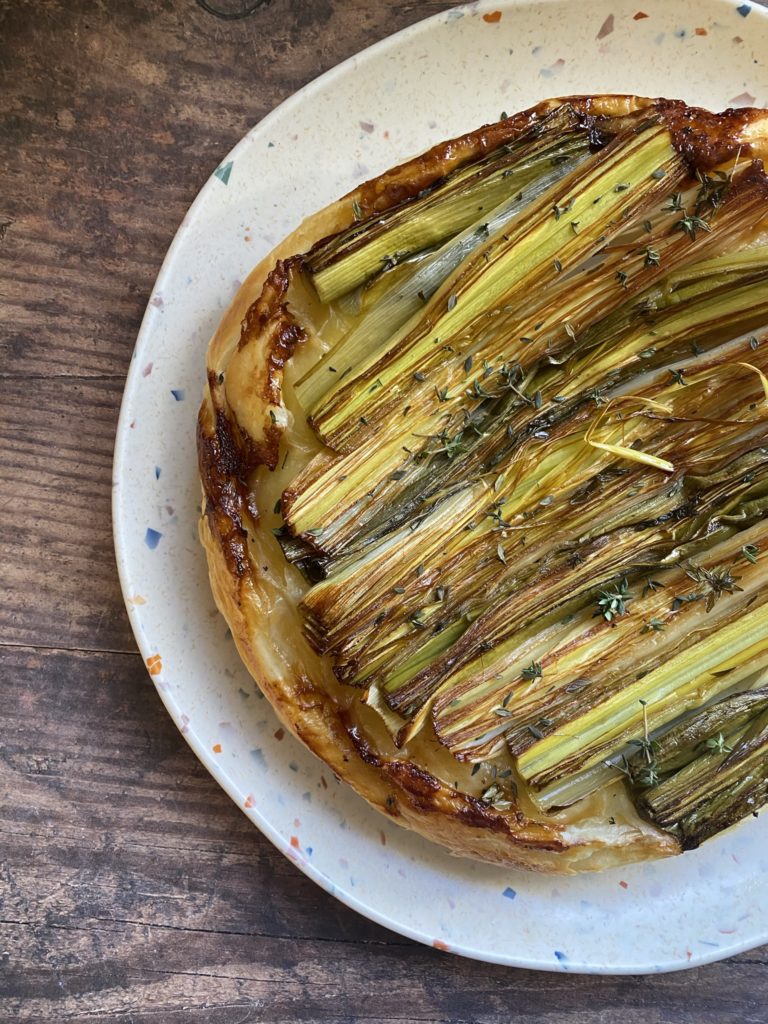
I love a tarte tatin. It’s one of those deceptively simple dishes. One that wows your guests but is actually really very easy to make. A traditional tarte tatin is a French dessert made with caramelised apples and puff pastry. But you can take the concept and run with it in any direction. I love making savoury versions as a light lunch or fancy looking starter with beautiful, bitter salad leaves. Balsamic beetroot? Parsnip and apple? Red onion? Brussels sprout and chestnut? The list goes on. But my favourite by far has to be this luscious leek version.
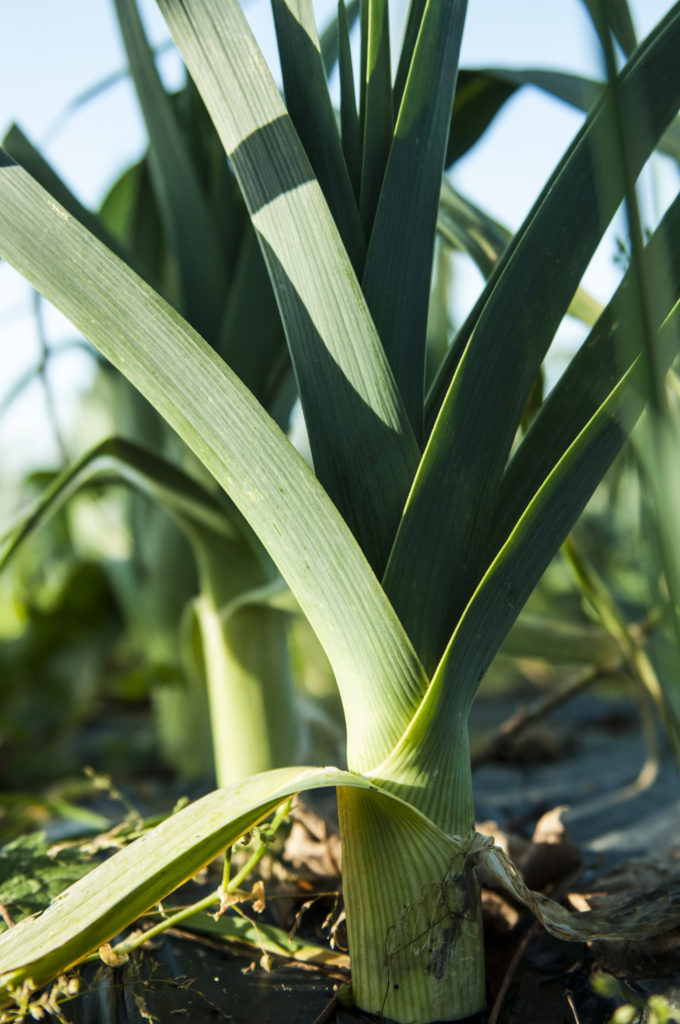
Leek might be one of the most underrated vegetables. When highlighted like this and showcased as the main event, leeks really stand out as the beautiful, sweet, soft vegetables that they are. Mellow and silky, leeks go incredibly well with vinegar and thyme. If you want to take it up a notch you could add a slick of Dijon mustard to the pastry before tucking it over the leeks too. Another variation I make sometimes is with a sprinkle of capers in the base of the pan. That combination of sweet, sharp and fragrant is so incredibly good. I hope you enjoy it!
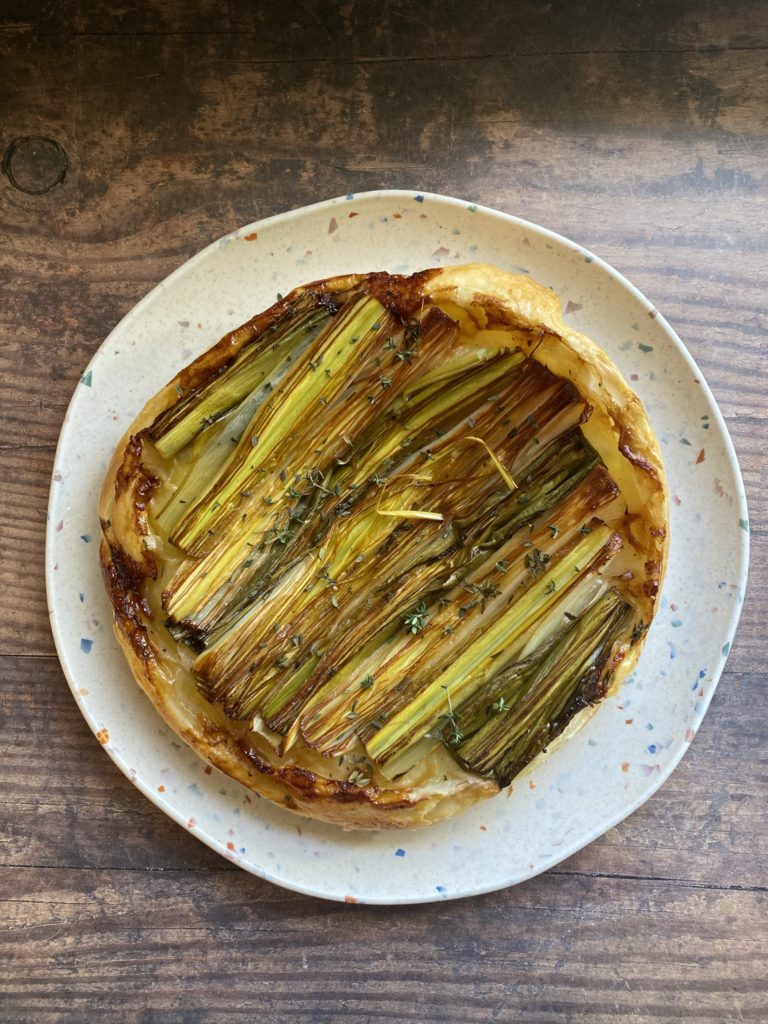
Did you try this recipe? Don’t forget to share it with your friends, tag us @greenearthorganics1 in any photos on Instagram and let us know how it went in the comments. Liz x
Ingredients (serves 8 as a starter)
- 1 pack of ready rolled puff pastry
- 2 leeks
- 20 sprigs of fresh thyme
- 3 tbsp apple cider vinegar
- half a handful of sugar
- 1 tbsp butter
- 1 tbsp olive oil
- salt and pepper to taste
- optional extras – capers and Dijon mustard
- bitter leaves to serve
Method
Preheat the oven to 200C. Get an oven and hob safe pan ready. If you don’t have one you can use a baking dish and do the entire process in steps in the oven instead.
Start by cleaning the leeks. The easiest way to do this is to split them down the middle, keeping the root end intact, then run them under a tap to quickly clean the mud out of each layer.
In an oven and hob safe pan, melt the butter then add the olive oil and swirl to coat the bottom of the pan. Sprinkle over the sugar and half the thyme leaves. (If you want to add capers to the dish, do it now. Sprinkle a tbsp or two evenly into the pan for the odd little salty flavour bomb.)
Then measure the leeks against the pan and cut them in long slices to snugly fit, cut side down, the entire base of the pan. Try and keep the slices intact, don’t move them around once they are in place.
Add the vinegar to the leeks and then season them well with a big pinch of salt and a generous grind of black pepper. Add a few more fresh thyme leaves – reserve some for decorating the dish at the end. Allow the leeks to par cook on the hob so that they start to caramelise with the sugar and fat before adding the pastry.
Turn the heat off then, working quickly, cover the leeks with the puff pastry. Trim it to size and use the off cuts to fill any gaps. This will be the bottom of the tart so no need to be too neat. (If you’d like to add Dijon mustard, brush it over the pastry before popping it on the leeks, mustard side down.)
Tuck the pastry gently in around the edges then pop the dish into the oven to bake. It should only take around 20 minutes or so but just keep an eye on it. It’s ready when the pastry is risen and golden.
Then take the pan out of the oven and let it settle for a couple of minutes. Put a large platter or wooden chopping board over the pan, then in one swift, confident movement, turn the dish upside down (don’t forget to use oven gloves as the pan will still be hot!)
Carefully pick up the upside down pan and you should have a gorgeous dish! Sprinkle over some more fresh thyme leaves, slice with a large, very sharp knife and serve with a simple salad.
Here’s a quick video of the recipe. Hope you find it helpful!
This would be fantastic with a chilled glass of white wine. Check out our organic selection here.
